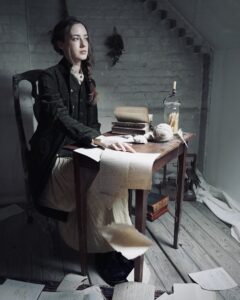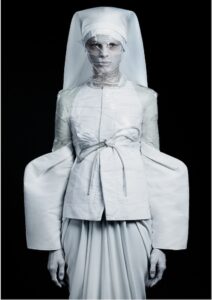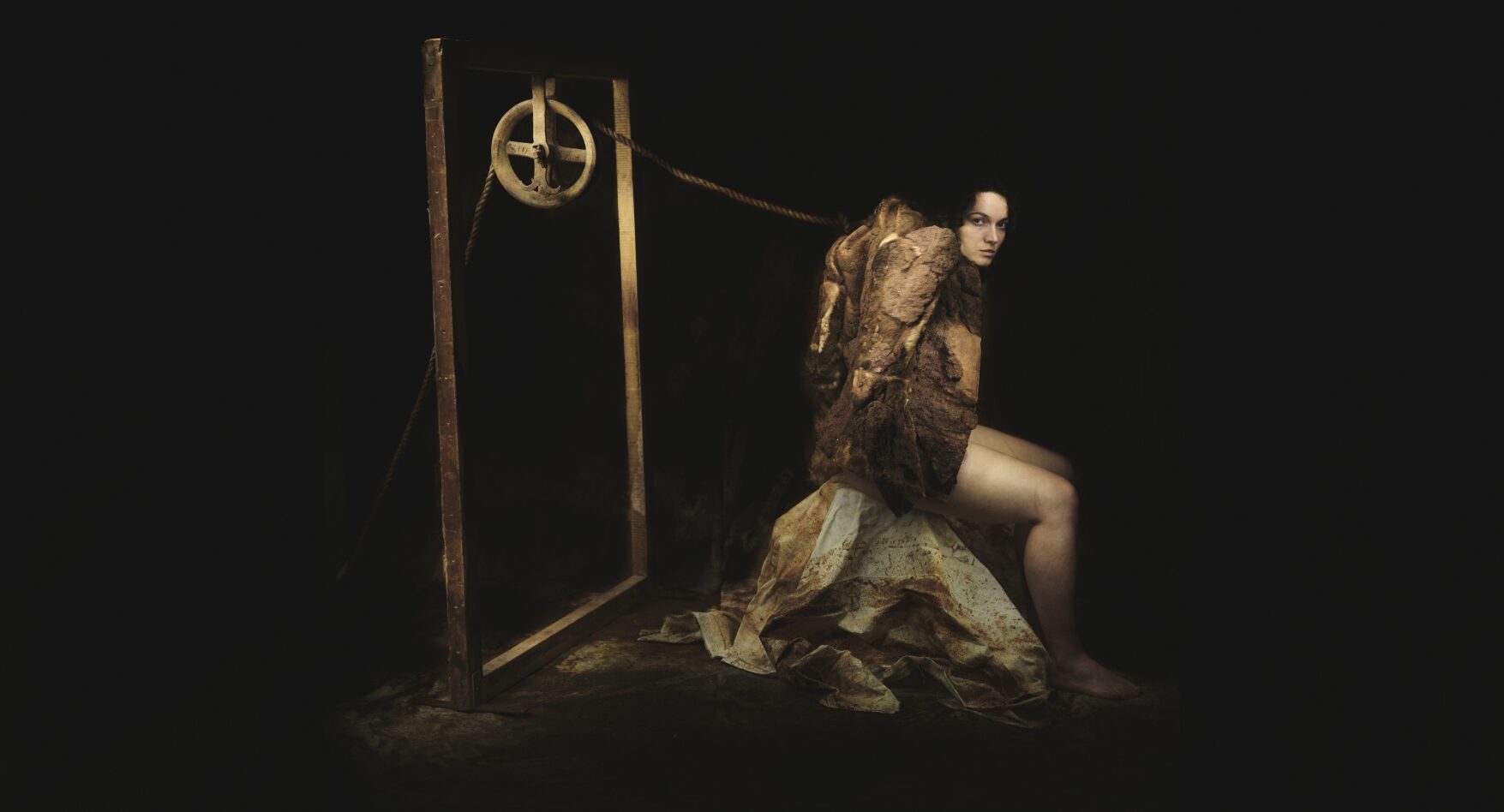
Corrosion as Craft: Rethinking Fashion Through Decay
What if beauty wasn’t preserved, but allowed to rust? Justin Matringe turns decay into design, crafting garments that corrode the very idea of fashion itself.
A long, lifeless dress hangs from a thick steel chain, its weight pulling at the hook above like a relic on display. The setting, part brutalist shell, part decaying warehouse, feels post-apocalyptic, all sharp edges and concrete rot. The garment itself, streaked with rust and frayed at the hem, bleeds oxidized pigment in slow drips onto a crumpled plastic sheet below. Each drop spreads into a sinister puddle of burnt orange and brown, like the aftermath of an industrial wound.
This isn’t a scene from a disturbing film, it’s how Paris-based fashion designer Justin Matringe presented the centerpiece of his end-of-year DSAA collection at École Duperré. The garment, titled Clay Lady, fuses the aesthetics of rust with the strength of metal, symbolizing the tension between fragility and resilience.
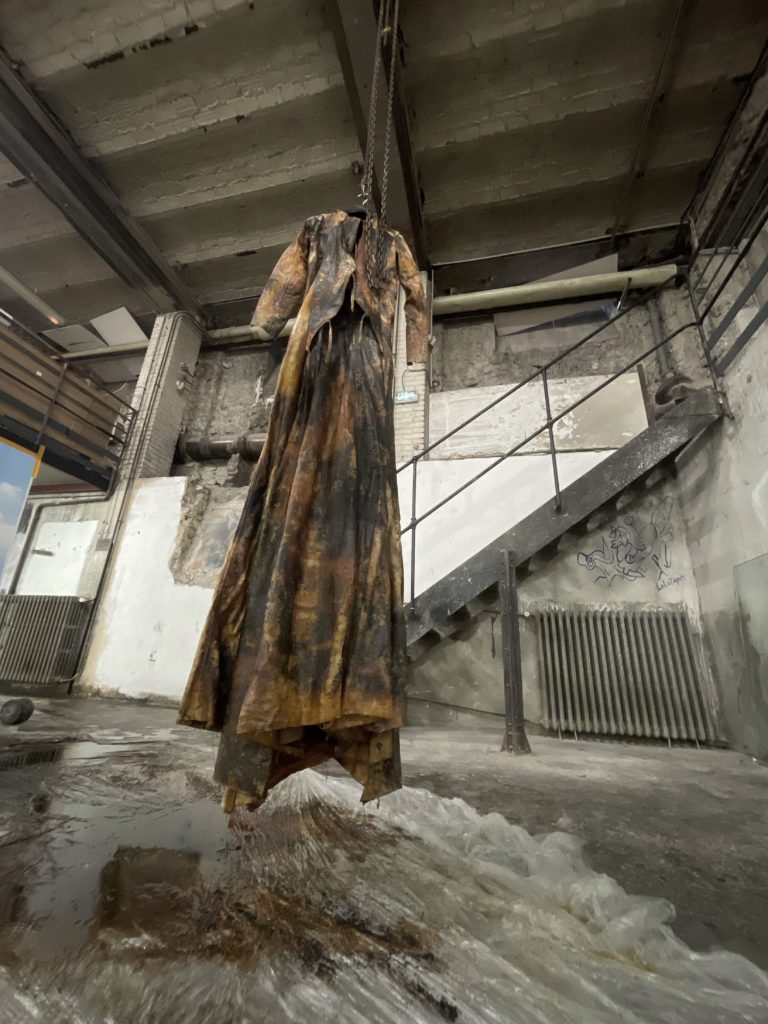
The 27-year-old’s rusted fashion collection also included avant-garde pieces such as a rust-proof raincoat, where the corrosion is sealed beneath a protective layer, symbolizing the coexistence of decay and durability, and a short jacket molded from a bust titled Subterranean Woman, a piece that merges troglodyte mythology with underground fashion. The results are unapologetically bold, and a little unsettling. These garments read like a deliberate rejection of conventional beauty standards, yet their raw audacity is paradoxically captivating.
“I don’t have an elaborate origin story,” Matringe tells L’Abbeye. “I’ve just always been a dreamer.” Once a high-level athlete, he never considered fashion until he turned 18. “The idea of telling stories through clothing speaks to me deeply and continues to drive me every single day.”
Matringe currently freelances for the Paris-based brand Sandrine Philippe while also developing his own label, Regard Cerné, a personal project inspired by a fictional civilization born in a cave. “I’m trying to bring that world to life through my creations,” he says.
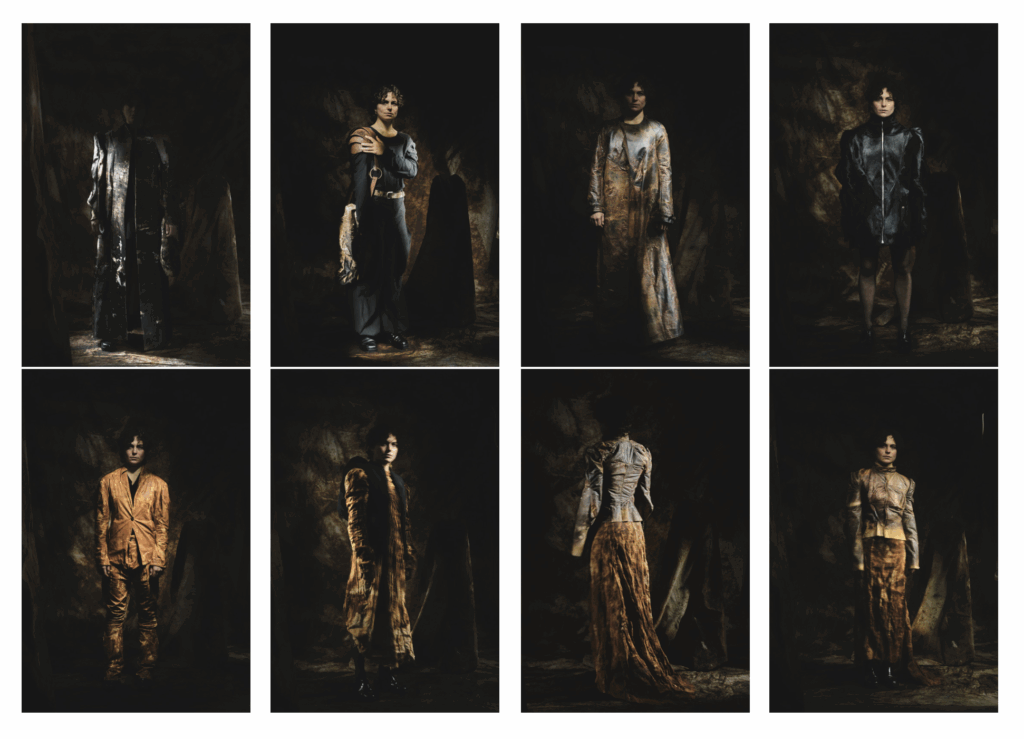
Taking direct inspiration from the cave’s textures and symbolism, Matringe began experimenting with rust crust techniques to forge a new, unconventional, decaying aesthetic. During his MA, he developed a distinct method to ennoble natural materials, cotton, linen, hemp, and second-hand leather, through oxidation and dye processes. The result is a series of matte, highly textural pieces in mud browns and deep, blood oranges that appear to be decaying before the viewers’ eyes. Standouts include a rusted leather belt with an oversized metal buckle and his Rusty Rocky Jacket, crafted from cowhide and treated to appear as if it has been resurrected from the depths of Zeus’ cave.
“I’ve always been fascinated by old objects,” Matringe explains. “They hold a certain mystery, as if their stories have no clear beginning. Everyone has their own definition of beauty. For me, it’s not clean, smooth, or perfect, it’s worn, stained, and deconstructed by time. Many people see my work as a rejection of beauty, but that’s not my intention. I create these pieces because I love how they look. To me, that’s where true beauty and character lie.”
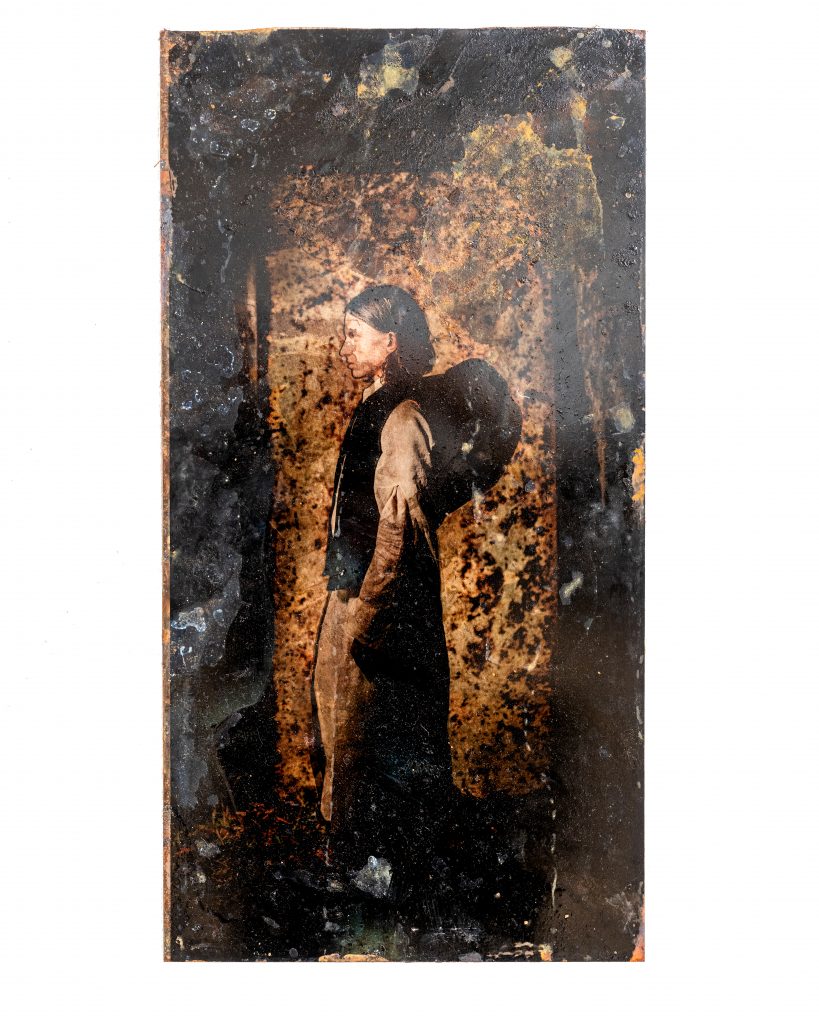
He delights in distortion, repurposing materials in ways that conceal their origin. The shapes of his garments are deliberately strange and almost alien, especially when worn. There’s an unsettling quality, but it invites touch. “The tactile aspect draws people closer,” he says.
Unsurprisingly, Matringe’s process is as intricate as the concept. It begins with a standard plastic mannequin, which he physically alters, thickening, hollowing, and reshaping it into new anatomical forms. Bumps and asymmetries emerge, echoing the imagined figures from his fantasy cave world. “I reshape their anatomy to fit the environment they come from,” he says. Next, he molds fabric onto the sculptural form like a second skin. Strategic cuts suggest future seam lines, guided by instinct and anatomical logic. Once removed, the fragments are reassembled like parts of a Frankenstein body. “The process is long but limitless, fueled by imagination.”
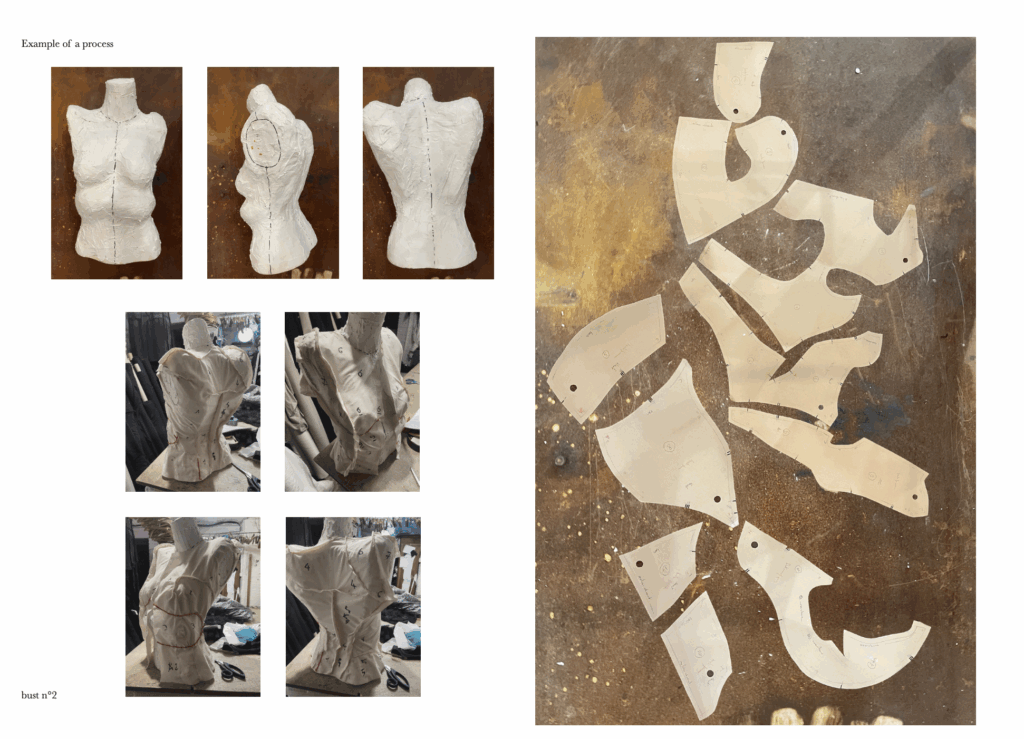
But it’s the material treatment, particularly the rust ennoblement, that gives his abstract ideas their physical presence. “As for how I achieve the rusted effect… I can’t reveal everything,” he grins. “Let’s just say I have a few secret recipes tucked away in my notebook.”
In a fashion world increasingly open to rethinking beauty, the future of avant-garde design seems poised to keep moving through darker, more experimental terrain. Designers like Matringe are leading that descent, embracing obscurity, decay, and the transformation of textiles over time as legitimate aesthetics.
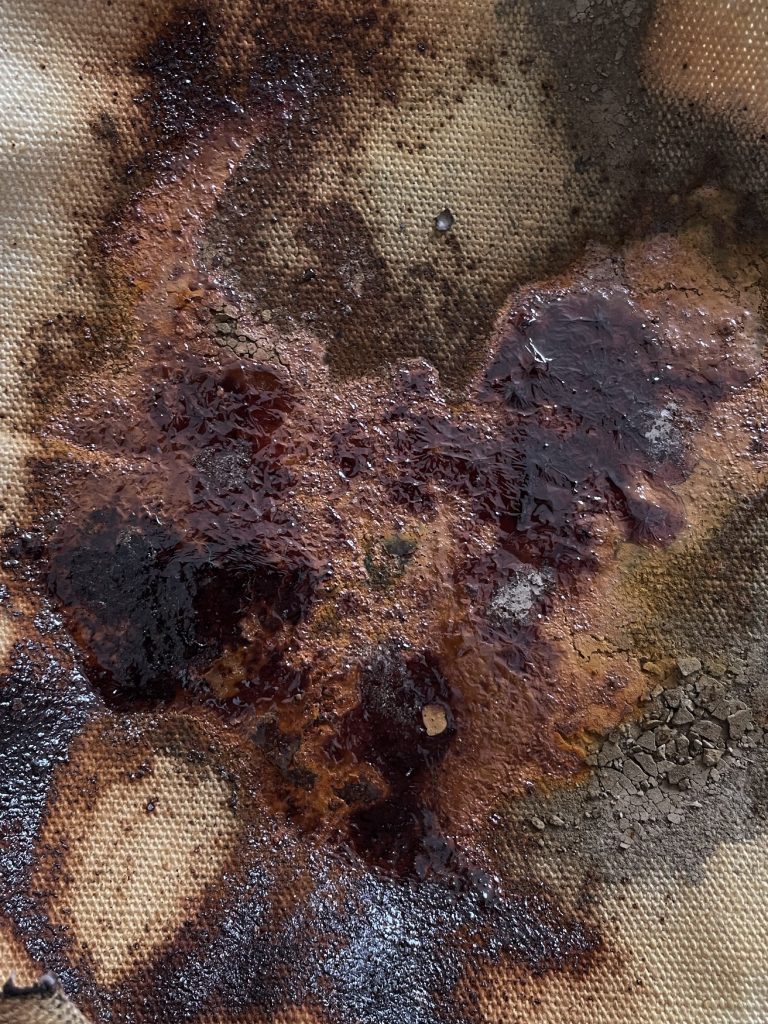
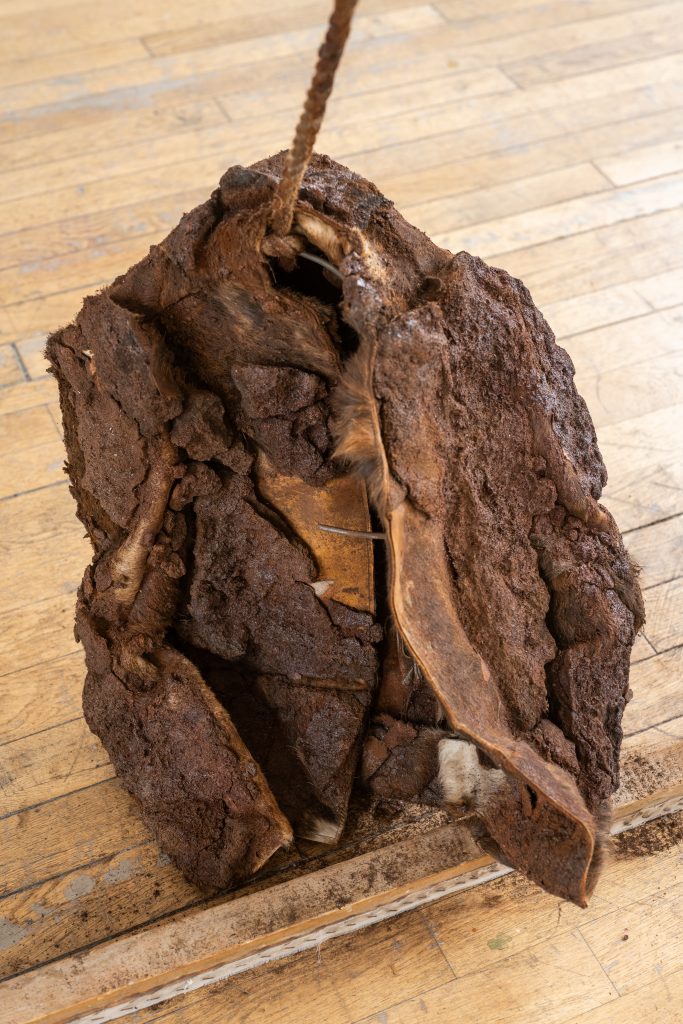

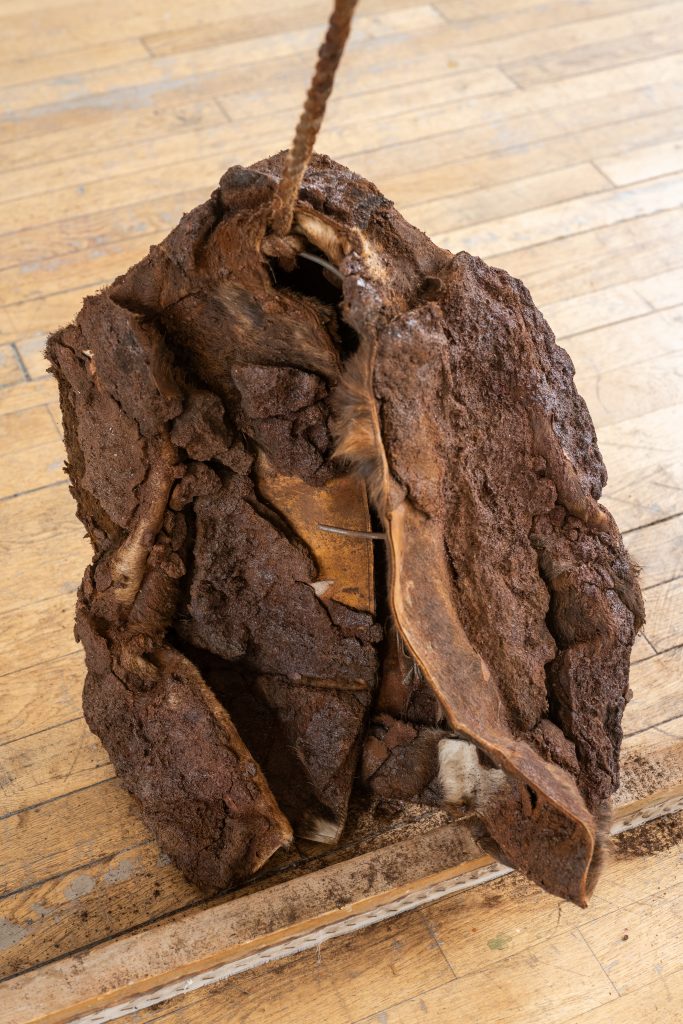
Justin Matringe’s work doesn’t just challenge the boundaries of fashion, it corrodes them. By embracing decomposition, distortion, and decay, he invites us to look beyond the polished and pristine toward something raw, tactile, and emotionally charged. In a landscape dominated by fast trends and sterile aesthetics, his garments pulse with narrative and sensation, like relics unearthed from a civilization that never was. As the line between beauty and discomfort continues to blur in contemporary design, Matringe stands at the forefront, proving that corrosion, when wielded with intention, can be as compelling as creation itself.

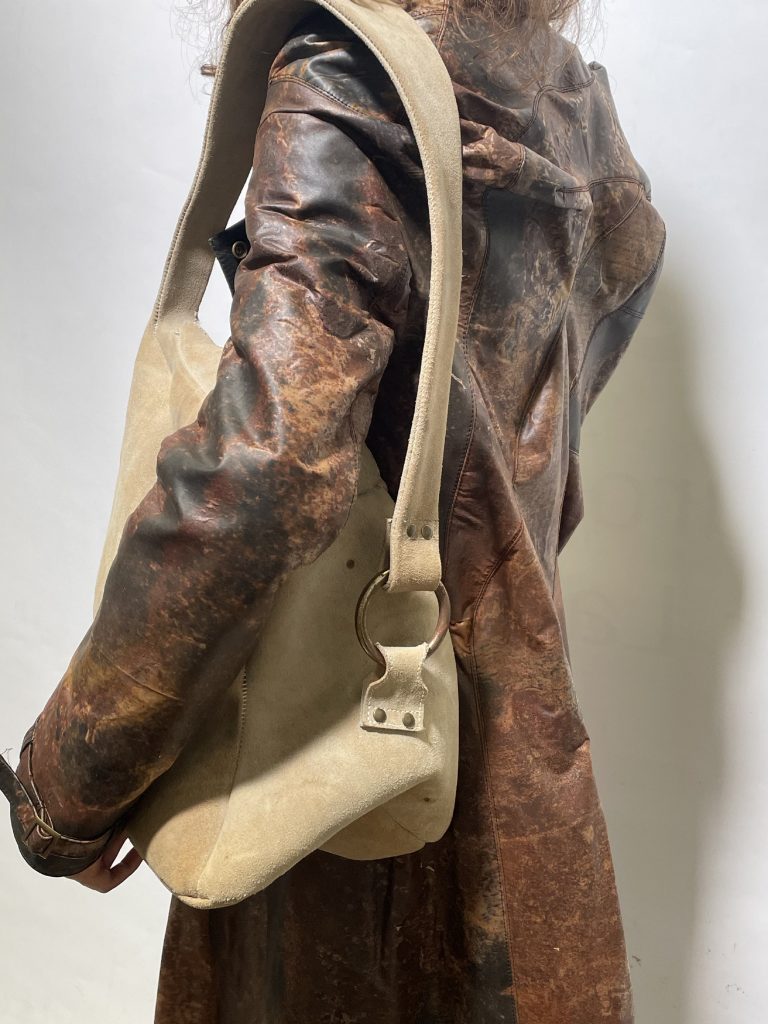
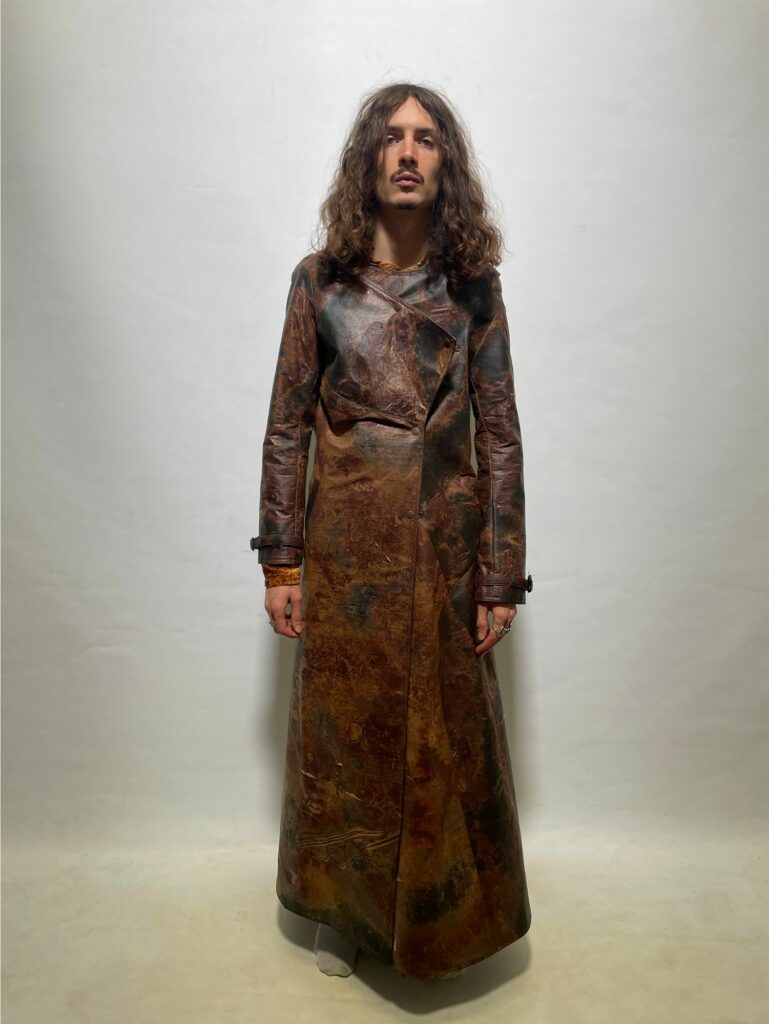
Credits
Written by Grace Robinson

